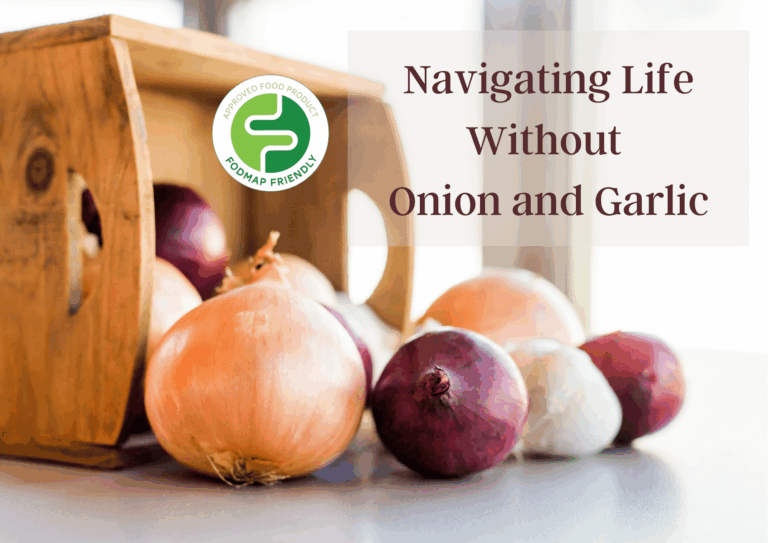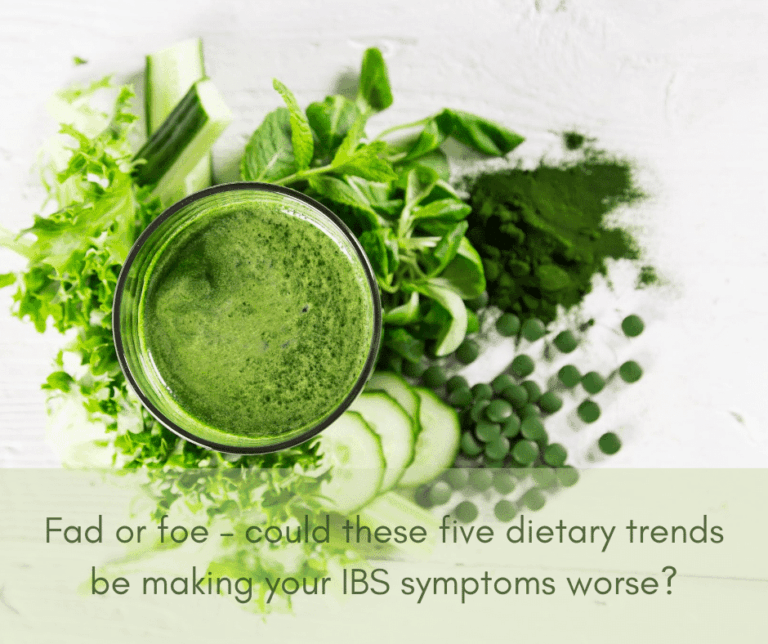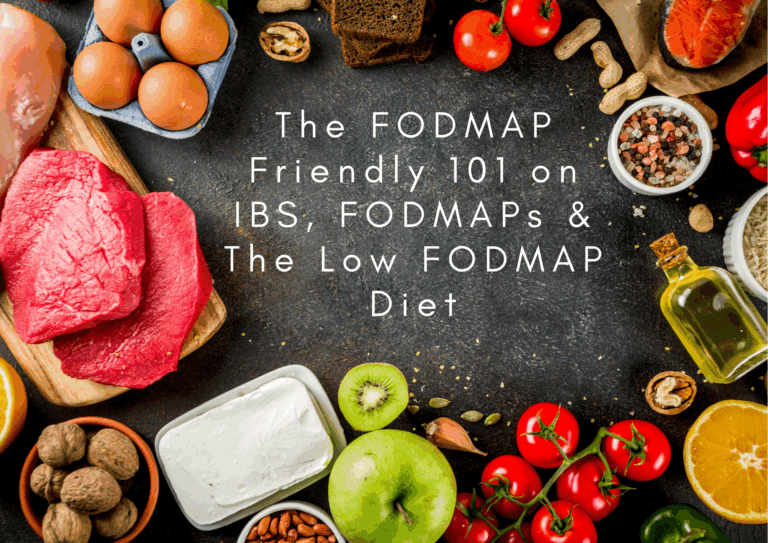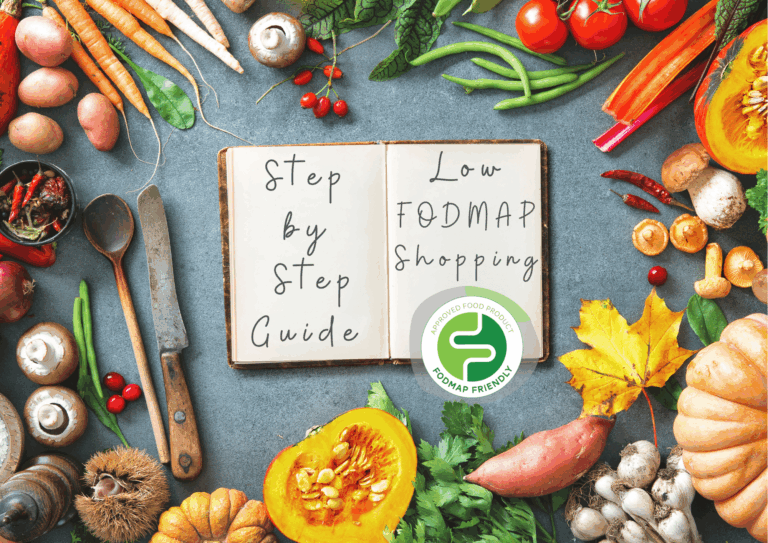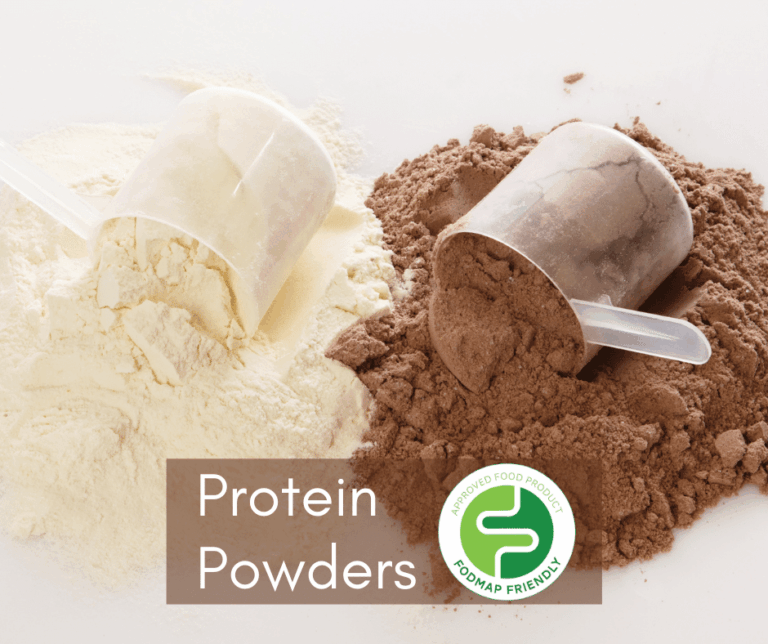Meal planning can save you time and money and reduce the need to purchase last-minute takeaways, with high FODMAP ingredients. Preparing several evening meals at once means most of the shopping, cooking, and washing can be done at the same time, leaving more time to rest and relax. If you are already experienced in meal prepping it won’t take you long to apply those skills to Low FODMAP meal prepping. Here are some tips on how to prepare seven low FODMAP dinners that the whole family can enjoy!
Before beginning your meal prep, it’s super important to be organised and have all the ingredients and equipment you will need. Make a list of the recipes you will be making and the ingredients and quantities you need to buy. Start with enough ingredients to make seven evening meals, and then when you gain more confidence, you can double your recipes to make fourteen meals. That is of course if you are blessed to have a freezer big enough to hold all of that meal prep.
Step one: Get your kitchen equipment in order!
For batch cooking to be successful, it is super important to be prepared not only with the right ingredients, but the right equipment is essential to getting the job done efficiently as possible. One pot meal’s can be prepared quickly using a pressure cooker and could be something to consider for speeding up the process. Otherwise a slow cooker will allow you to prepare larger quantities, use cheaper cuts of meat and free your hands to get prepping on the next meal. Both moist cooking methods are great for intensifying flavours in meals. You will also need to consider what containers you have already and what you need to purchase. Snap lock bags can save space in the freezer and reduce the need for expensive plastic containers. Next up we are checking out our low FODMAP shopping list by ticking off the ingredient’s you already have!
Step two: Go shopping. Low FODMAP must have ingredients!
Cobram Estate Roasted Onion Infused Extra Virgin Olive Oil
Cobram Estate Garlic & Onion Infused Extra Virgin Olive Oil
Cobram Estate Garlic Infused Extra Virgin Olive Oil or Garlic & Rosemary Infused Extra Virgin Olive Oil
FreeFOD Onion Replacer and FreeFOD Garlic Replacer
Casa De Santé Vegetable Stock Powder
Casa De Santé Garam Masala Seasoning Mix
Casa De Santé Thai Curry Powder
HELGA’S Gluten Free Traditional White Bread
Slightly Different Tomato & Basil Sauce
Orgran Buckwheat Pasta Spirals
Mingle Seasoning Moroccan Spice Blend
Liddell’s Lactose Free Cheese & Milk Range
FODMAPPED For You Chicken Stock
FODMAPPED For You Roasted Pumpkin Soup
Step three: Swap High FOMDAP ingredients for their low FOMDAP alternative!
When making low FODMAP meals its essential to make some simple Low FODMAP ingredient swaps to ensure any high FODMAP ingredients are not included in your meals.
Grains and cereals:
Wheat bread and products made from wheat contain fructans, a FODMAP sugar which belongs to the Oligosaccharide group and the ‘O’ in FODMAP. If you are sensitive to fructans, eating wheat may lead to symptoms of bloating, excessive wind, abdominal pain and/or altered bowel motions. Swap these for FODMAP Friendly certified bread and cereal products such as HELGA’S Gluten Free Rolls or Orgran Buckwheat Pasta Spirals.
Garlic and Onion:
Swap these high FODMAP ingredients for the green tops of leek and spring onion, garlic infused olive oil or an onion flavoured herb like chives. Garlic and onions are a key ingredient in many recipes providing added flavour. For a stronger flavour, FODMAP Friendly certified FreeFOD Onion Replacer and FreeFOD Garlic Replacer are great alternatives. If a more subtle flavour is needed why not try Cobram Estate Garlic Infused Extra Virgin Olive Oil which has been infused with a rich garlic flavour , great for adding flavour to stir fry’s.
Legumes and beans:
Canned legumes have lower levels of FODMAPs and are a better choice for low FODMAP cooking than their dried counterparts. The canning process lowers the FODMAP content by removing some of the water soluble FODMAPs sugars (Fructans and GOS) into the canning liquid which is latter strained away. Canned lentils, chickpeas, three bean mix, butter beans can be added to your favourite soup one pot dish or mixed through a warm winter salad dish. When considering how much to add to your meal always divide the total amount of legumes by the number of serves it makes. A low FODMAP serve for one is ½ cup of canned lentils or ¼ cup of canned chickpeas or butter beans. Remember to strain and rinse the canned legumes and beans.
Stock:
Commercial stocks often contain high FODMAP ingredients that can go by the name of natural flavourings which means onions and garlic. You could try making your own stock from scratch or save time by using FODMAP Friendly certified stocks. Casa de Santé makes a vegetable based low FODMAP stock powder which can easily replace other high FODMAP commercial stocks. Dry stock powder is more cost effective than liquid stocks and it can be stored for longer. An added advantage is the ability to adjust the strength of the stock to your own personal preference. Check out Casa De Santé Vegetable Stock Powder, Bay’s Kitchen Stock Range and San Elk Vegetable Stock Powder.
Spices:
To provide additional flavour, many commercial spice mixes can have added garlic or onion salt. To prevent adding high FODMAP flavourings, use 100% spices or certified spice rubs and blends. Casa de Santé make a BBQ Rub great for seasoning steaks and chicken and the Garam Masala Seasoning Mix is ideal for adding flavour to slow cooked meat and vegetable dishes. If curry is your thing, Casa De Santé has a Thai Curry Powder which is free from garlic and onion and can be added to chicken, fish or vegetable curries. Curry powders have a great long storage life and value for money when compared to other premade curry sauces.
Soup:
It is officially winter in Australia and the Southern Hemisphere. Winter soups paired with freshly baked bread are without doubt the ultimate comfort food! There is nothing like the smell of fresh bread on a cold winter’s day! Regardless of the son, soups are amazing! Purchased stocks and soups can often contain high FODMAP ingredients like garlic or onion. Making homemade soup can be cost effective and a great way to increase daily vegetable and legume intakes. Many low FODMAP vegetable are suitable at these serve sizes: 1 medium orange carrot; 1 medium white potato; 1 teaspoon ginger; 75g red pepper, zucchini, celery, butternut pumpkin or sweet potato. Top tip: line a muffin tin with mini freezer bags and then fill each with soup, freeze and store.
Meat and alternatives:
Low FODMAP protein rich foods include red meat, fish, chicken, eggs, and 100g firm tofu. Include these in meals may keep you full for longer and they are also an excellent source of iron, zinc and B group vitamins. Add these to your main meals to help reach your daily targets for protein.
Step four: Start with our 7 dinner recipes from below and get cooking!
All recipes have been selected because they store well in the freezer; it could be disappointing to spend the prep time on meals that did not come up well after defrosting and reheating.
Thai Green Curry, Shepherd’s Pie, Homemade Vegetable Soup with low FODMAP Garlic Bread, Moroccan Meat Ball Bake, Lasagne, Mexican Chickpeas and Rice and Pumpkin Arancini Balls
MEAL ONE: Thai Green Curry
MEAL TWO: Root Vegetable Soup and Garlic Infused Olive Oil bread rolls

MEAL THREE: Moroccan Lamb Meat Ball Bake
MEAL FOUR: Mexican Chickpeas and Rice

MEAL FIVE: Shepherd’s Pie

MEAL SIX: Lasagne

MEAL SEVEN: Pumpkin Arancini balls

Where to next?
As your confidence build you can increase production by doubling your recipe quantities or even extend your prep to include lunches. Lunches could include dishes suitable for cold storage. With preparation and organisation your lunches for the week could be easily put together by taking time to do some basic mise en place (setting up). By preparing ingredients, chopping, grating, slicing, washing and even cooking as this term suggests, you can have everything on hand when needed. For example, preparing a week of low FODMAP lunches might look like this: in several individual containers, store grated carrots, washed and torn iceberg lettuce leaves, sliced pickled beetroot, sliced cucumber, hard boiled eggs, cubes of tasty cheese, drained canned legumes, pre-cooked chicken and cooked grains or cereals, rice, gluten free pasta and quinoa. In addition, small airtight jars can be filled with dry store ingredients like pumpkin seeds, dried cranberries, walnuts, almonds, brazil and macadamia nuts are easily sprinkled on prepared lunches to provide extra dietary fibre and texture. When it comes time to get lunch ready, grab a container and simply mix and match combinations together to make different lunch each day.
Written by: Angela Lee (Accredited Practising Dietitian) from TLC Nutrition
Reviewed by: Kiarra Martindale (Accredited Practising Dietitian)










